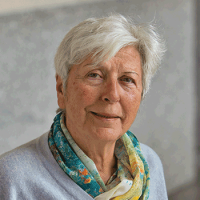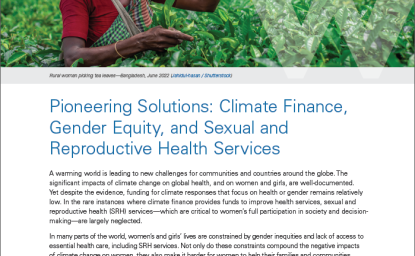Population growth has stabilized in most of the world, largely laying to rest the fear that overpopulation would outstrip the planet’s resources. The fear was first triggered by the economist Thomas Malthus in the early 19th century and was still being fanned in the 1970s by the Club of Rome. Today the fear of shrinking population has replaced that of run-away growth because of plummeting fertility rates (the number of children per woman) in much of the world, the resulting graying of the population and its forthcoming decline.
China, which in 1980 was so worried about the size of its population that it imposed a Draconian one-child policy, has now reversed course and is trying—largely unsuccessfully—to encourage families to have more children. In reality, no country that has reached low fertility rates has been able to motivate women and families to have more children. Even Sweden, which has among the most family friendly policies in the world, with generous maternity and paternity leave, subsidized day care and flexible work schedules for parents, has not been able to increase its fertility rate of 1.76 (and 1.67 among the native population), which is far below the replacement level of 2.1.
The Middle East anomaly
Some Middle East countries are an exception to these overall demographic trends. The richer Gulf countries have seen their fertility rates plummet below the replacement level, as expected, and the poorest countries, like Yemen and the Palestinian territories, display the high fertility rates associated with poverty and lack of hope for a better future, also as expected. However, fertility rates in two middle income countries, Egypt and Algeria, not only remain high but have increased again after a period of decline—a very unusual development because declining fertility rates are usually viewed as irreversible. The analysis that follows seeks to place this anomalous trend in a broader perspective, focusing on Egypt.
The question is whether this trend is purely demographic or denotes a broader underlying problem that also explains why Egypt has not been able to change from a generally sluggish economy to rapid economic growth (although it is not devoid of resources) and why its political system remains stubbornly authoritarian. Indeed, the country appears to be stuck in its demography, economics and politics, despite the widespread discontent manifested in the uprising of 2011 and the obvious desire for change shown by a large segment of the population. What is blocking change in all areas? This complicated issue needs airing even if a clear answer remains elusive.
Countries can still experience economic and political crises, but they do not revert to what they were before the take-off.
I will revert here to the concept of a “take-off” set forth in 1960 by Walter Rostow (The Stages of Growth, Cambridge University Press, 1960) and since fallen into disuse. It is worth reviving it because it is clear that the most successful countries do not grow steadily and incrementally over a long period of time but experience a sudden break, a take-off moment that sets them on a new economic and cultural trajectory and changes the character of the country for good. Just in the post-World War II period, we can mention the so-called the Italian miracle of the 1960s, for example, the Asian miracle represented of the four East Asian tigers and China, or more recently the emergence of the BRIC countries. These transitions are permanent. Countries can still experience economic and political crises, but they do not revert to what they were before the take-off. No matter what disruption COVID inflicts on it, China will not regress to the peasant society over which Mao Tse Tung ruled.
The take-off is more than economic growth, it is a transformation of the entire society. The demographic transition to a low fertility rate is part of the package. Some analysts argue, for example, that about one-third of the explosive growth of the Asian tigers was related to the decrease in fertility rates, although others put the emphasis on economic policies.
Failure to take off
Egypt has not experienced a break-through in any area. During the 1990s per capita GDP growth was well ahead of population growth, as high as 17 percent in some years, but it did not change either the character of the economy or that of the country. The entrepreneurs that generated the growth remained tied to the government—President Hosni Mubarak’s sons were part of that group. The fertility rate in that period continued the slow decline of previous decades, reaching a low of 3.0 in 2005, but it climbed again to 3.4 in the 2014-17 period, then and started a new slow decline, reaching 3.2 in 2020.
The literacy rate started increasing during that period, but soon plateaued and in any case remained low. None of this indicates a take-off. And despite the 2011 uprising, politics have remained largely the same, with the military dominating as it has since the rise of Gamal Abdel Nasser in the 1950s.
...the burden such increases put on a country already struggling to feed, house, educate and provide medical care for its population.
The new increase in the fertility rate is particularly troubling for two reasons. First of all, it has serious material consequences. This can be seen more clearly if we move from the concept of fertility rate—somewhat abstract although extremely useful for comparative purposes—to its concrete consequences. In Egypt, the fertility rate of 3.2 in 2020 resulted in the birth of 2.3 million babies. We do not need to elaborate at length on the burden such increases put on a country already struggling to feed, house, educate and provide medical care for its population. A few data points will suffice: the number of school children grew by 40 percent between 2011 and 2016. Already more than a third of students entering middle school are unable to read and write. And 63 percent of Egyptians cannot find work except in the informal sector of the economy.
But it is also troubling because the rebound in fertility is the result of the lowering of the age at which women marry and have children. This denotes that, even while the fertility rate decreased, the culture did not really change. Some have argued that this is evidence of the pernicious impact of the Muslim Brotherhood when it came to power in 2012, but in reality, the change happened well before that time.
The Egyptian government has waxed hot and cold about the population problem over the years. Nasser raised the alarm about it but did not launch a program to tackle it. Mubarak promoted plans to help curb population growth, particularly during the 1980s when USAID-supported programs helped increase the availability and use of modern contraceptives. The writer remembers the large posters promoting family planning plastered on the sides of Cairo buses in the 1980s, which subsequently disappeared. Furthermore, by the end of his life, Mubarak started seeing the population growth that made Egypt the 14th most populous country in the world as an accomplishment of his presidency.
More of the same?
In the last few years, President Abdel Fatah al-Sisi has started raising the alarm about population growth again, castigating his compatriots in his preachy, moralistic style and warning repeatedly that families who have more than two children place a heavy burden on the Egyptian state, which does not have sufficient resources. A plan to re-energize family planning was issued by the government in 2020, again with the support of USAID.
On paper, the plan appears to be in line with current best practices in family planning, suggesting that the country needs not only to strengthen the availability of contraceptives, but also to promote the education and empowerment of women. Although it is impossible to predict how well such provisions will be implemented, such programs seem steps in the right direction given the real population problem Egypt faces.
Addressing population in isolation is unlikely to make much difference in the face of the entrenched political, economic and cultural problems that keep Egypt mired in the status quo.
The broader and more fundamental question, however, is whether this renewed focus on family planning can stimulate the needed lasting cultural change in a country which remains politically and economically static. Egypt’s experience so far suggests the answer is probably negative. Previous family planning efforts worked temporarily, but did not bring about a permanent change in attitudes. This is seen by the fact that the new increase in the fertility rate is related to a decrease of the age at which women marry and have children across all social classes and geographical areas. The entire society seems to be slipping backward. Furthermore, population is only one of the myriad problems blocking a take-off. Addressing the population in isolation is unlikely to make much difference in the face of the entrenched political, economic and cultural problems that keep Egypt mired in the status quo.
It is not clear what could finally trigger Egypt’s take-off, but it seems extremely unlikely that it will be more emphasis on family planning and contraception by an authoritarian regime.
The views expressed in these articles are those of the author and do not reflect an official position of the Wilson Center.






